Jewels of time
Very often, when they say about movement, which “gives life” this or.jpg) that wristwatches, you can meet such interesting characteristic, as number of jewels, fixed in watch movement. Uninitiated person immediately has many questions about this. Before I figured out what is what, I imagined watch stone as some piece of solid fossil, unclearly why fixed and overloaded with gears, wheels and other “things” movement. Really, it is rather interesting, the meaning “stone” contains a huge numeral of different meanings. May be, watchmakers, aiming to add some “pathos” to their ticking creation, implement under the case of wristwatches a Moon stone, which has world known effect of “cat's eye”, or watchmaker inserts in movement a piece of facing stone, which stayed after the house repairing. From the other side, may be great masters of horology, in common with mighty alchemists, having got invaluable experience during centuries of development history of horology, anyways found legendary philosophic stone, and for some obvious only for them reasons they put it in their watch. For some romantics, like me, can come the thought that watch stones are kind of “intertemporal wanderers”, which help Great Time to count its infinite steps. But it is a fairy-tale. Undoubtedly, the most plausible hypothesis about character and type of stone of watch movement is hypothesis that it is one of precious stone variety. To the point. Really, though it is not about facing decorative incrustation, but about “internal organ” of watch, Englishmen call this “piece of fossil” in watch movement with beautiful and significant word “jewel”, what in Russian means “precious stone” . Now it clearer, at least, question about functions of these stones in smallest movements of wristwatches is still open. Let's “close” it! that wristwatches, you can meet such interesting characteristic, as number of jewels, fixed in watch movement. Uninitiated person immediately has many questions about this. Before I figured out what is what, I imagined watch stone as some piece of solid fossil, unclearly why fixed and overloaded with gears, wheels and other “things” movement. Really, it is rather interesting, the meaning “stone” contains a huge numeral of different meanings. May be, watchmakers, aiming to add some “pathos” to their ticking creation, implement under the case of wristwatches a Moon stone, which has world known effect of “cat's eye”, or watchmaker inserts in movement a piece of facing stone, which stayed after the house repairing. From the other side, may be great masters of horology, in common with mighty alchemists, having got invaluable experience during centuries of development history of horology, anyways found legendary philosophic stone, and for some obvious only for them reasons they put it in their watch. For some romantics, like me, can come the thought that watch stones are kind of “intertemporal wanderers”, which help Great Time to count its infinite steps. But it is a fairy-tale. Undoubtedly, the most plausible hypothesis about character and type of stone of watch movement is hypothesis that it is one of precious stone variety. To the point. Really, though it is not about facing decorative incrustation, but about “internal organ” of watch, Englishmen call this “piece of fossil” in watch movement with beautiful and significant word “jewel”, what in Russian means “precious stone” . Now it clearer, at least, question about functions of these stones in smallest movements of wristwatches is still open. Let's “close” it!
Historical information
 Undoubtedly, any watch digest, as any watchmaker, will report to you without hesitations, that jewels in watch movement are elements, which are needed for stabilization of abrasion and decreasing of the degree of depreciation of movement surfaces, that are in constant connection with each other. Number of jewels says about certain type of watch movement. This meaning was officially adopted in 1965 by Swiss organization NIHS (Normes de l’industrie Horlogere Suisse), registered in standard NIHS 94-10 and since than used as the only right interpretation of the purpose of watch jewels. Undoubtedly, any watch digest, as any watchmaker, will report to you without hesitations, that jewels in watch movement are elements, which are needed for stabilization of abrasion and decreasing of the degree of depreciation of movement surfaces, that are in constant connection with each other. Number of jewels says about certain type of watch movement. This meaning was officially adopted in 1965 by Swiss organization NIHS (Normes de l’industrie Horlogere Suisse), registered in standard NIHS 94-10 and since than used as the only right interpretation of the purpose of watch jewels.
An unique idea of watch movement creation with jewels belongs to Englishman George Graham (don't confuse with contemporary namesake Scottish soccer player), famous watchmaker, inventor, geophysicist and member of London Royal Society that study development of knowledge about the nature. George Graham (1673-1751) was partner of equally well-known English watchmaker Thomas Tompion (1639-1713), and G. Graham became famous with his invention of free anchor escapement, demonstrated by the master all over watch world in 1713 (1715). This movement is still used in modern wristwatches. During the whole life Graham did what he liked – made watches, and general number of pocket watches created by him is about 3000 pieces, in which, beginning from 1725, watchmaker fixed axises, pallets and impulse roll, made from ruby.
So, watch jewels of movement, the idea of which creation was born in the bright mind of George Graham, became indispensable elements for watchmakers of XVIII century. This is because movements of watches became smaller, that is why details quickly were disrepaired under the influence of winding spring. Jewels, being solid material, solved this problem. These stones for watchmakers was the great finding, as well as could be above-mentioned philosophic stone for alchemists. First pocket watch with natural jewels (rubies), fixed in movement, appeared in 1704. Before the beginning of last century natural jewels made two main functions: they served as decoration of watch case and were one of main components of movement. But soon, because of rapid development of science, radical change in watch sphere happened.
Science is for economy!
...Radical change in watch industry happened in 1902, when scheme of cultivation of synthetic sapphire was invented, it is still fixes in wristwatches as transparent protective crystal. Together with sapphire chemists learned to cultivate synthetic ruby, it enlarged the number of produced watch models, as value of synthetic stone is differ from value of its natural “colleague”. Natural stones kept function of external appearance decoration. Thus, accurate mechanical men and women wristwatch became a product of mass production, and not an expensive thing, available only for high society. Nowadays, aiming to decrease consumption on production of their models, watch companies fix in wristwatches only synthetic jewels. On the basis of my words, we can conclude that watch companies just save on production of their goods, but it is not so. It is not accepted to save on such accessory, as mechanical wristwatches, among watchmakers and fans of elite timepieces. The usage of unnatural jewels is caused not only by their lower cost compared with natural, but also by the fact that cultivated crystals with its properties are more stable, and, if I may say so, they are easy to “tame”, that is why synthetic “clones” are more comfortable in processing, often they have few impurities, their structure is more steady, and durability is higher. Of the above follows why the only one reason that natural jewels consider to be better than synthetic is esthetic aspect. That is the fact that movement of your wristwatch is “reach” and has a certain number of natural jewels, ravish the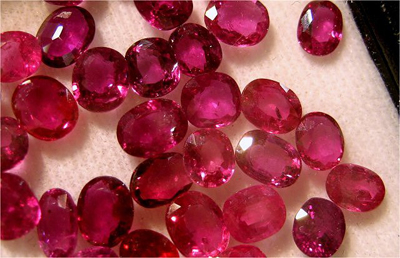 owner of wristwatch, and envy of others. Natural jewels can be seen only in expensive models of wristwatches, for example in limited series, in watches, produced in single piece, or in luxury wristwatches, made by the most popular watch companies in the world. For example, elite men wristwatches A. Lange & Sohne Debuts Richard Lange Tourbillon “Pour le Merite” with perfect decorated tourbillon have in its movement 32 jewels, one of which is a natural diamond (diamond endstone). As concerns of precious stone, modern watchmakers prefer synthetic ruby, but very rarely you can meet “cloned” sapphire or garnet. Usage of ruby stones in movements is due to transfer of small moments on escape wheel, and then on balance of movement, losses due to friction must be minimal. Experimentally it was found out that among metals and minerals ruby (natural and synthetic) have the least friction coefficient (ideally in comparison with steel). Ruby has high range of solidity and durability, such stones don't oxidize and don't decompose watch oil. And the last ponderable argument is that ruby has amazingly beautiful appearance. This is especially important, if movement is clearly visible through skeletonized dial or transparent case back. Of course, every sphere has exceptions. In this case such the exception is Swiss watch company Ulysse Nardin, which created perfect men wristwatch Ulysse Nardin Freak 28800 Diamond Heart. Really, heart of the watch, the movement, is interesting in its specially cultivated (synthetic) diamond, which was get with the help of plasma etching. As Swiss watchmakers assure, such heart will work without failure, without grinding for during several millenniums. owner of wristwatch, and envy of others. Natural jewels can be seen only in expensive models of wristwatches, for example in limited series, in watches, produced in single piece, or in luxury wristwatches, made by the most popular watch companies in the world. For example, elite men wristwatches A. Lange & Sohne Debuts Richard Lange Tourbillon “Pour le Merite” with perfect decorated tourbillon have in its movement 32 jewels, one of which is a natural diamond (diamond endstone). As concerns of precious stone, modern watchmakers prefer synthetic ruby, but very rarely you can meet “cloned” sapphire or garnet. Usage of ruby stones in movements is due to transfer of small moments on escape wheel, and then on balance of movement, losses due to friction must be minimal. Experimentally it was found out that among metals and minerals ruby (natural and synthetic) have the least friction coefficient (ideally in comparison with steel). Ruby has high range of solidity and durability, such stones don't oxidize and don't decompose watch oil. And the last ponderable argument is that ruby has amazingly beautiful appearance. This is especially important, if movement is clearly visible through skeletonized dial or transparent case back. Of course, every sphere has exceptions. In this case such the exception is Swiss watch company Ulysse Nardin, which created perfect men wristwatch Ulysse Nardin Freak 28800 Diamond Heart. Really, heart of the watch, the movement, is interesting in its specially cultivated (synthetic) diamond, which was get with the help of plasma etching. As Swiss watchmakers assure, such heart will work without failure, without grinding for during several millenniums.
Watch movement as a part of a system
 As we started taking about such important element of watch movement, as jewel, it is needed to understand its meaning and features of its complicated functions. Let's remember the point of the work and device of main organ of wristwatches – watch movement. Imagine: on average the movement has about 200 different details (the number varies from model to model), each of which you can see only through magnifying glass. With support of these smallest elements wristwatches get mechanic energy from main spring, which presents rolled steel strip. In the unfolding state it is obviously, a little bit larger, and while winding a watch the spring rolls back. Energy from main spring transfers on balance wheel with the help of gear transmission and wheel system. Balance (as simply to say, it is almost the same as wall clock pendulum) - this is wheel system, moving watch hands on the dial, counting minute by minute. Thus, balance is a kind of a center of watch movement, regulating the course of wristwatch. The position and weight of screws influence on speed of hand moving, situated on the balance edge. To imagine this system, the uninitiated person must has the brightest fantasy, as all above screws are such small details that, for example, an ordinary thimble holds in itself about twenty thousand similar “crumbs”. Let's continue to review the movement. Therefore, there is also a trigger wheel, which sets the balance in motion, connecting with the last one. This wheel regulates the moving, making characteristic sound, which is simply called “ticking”. Thus, it is clear, that any watch movement has main axis, which must constantly be under the energizing. Poor axis have nothing to do, from one side they are under power of winding spring, from the other side – regulator of balance – spiral, constraining the speed of rotation of “occupied” axis. The base of the balance brings on itself maximum load - it makes As we started taking about such important element of watch movement, as jewel, it is needed to understand its meaning and features of its complicated functions. Let's remember the point of the work and device of main organ of wristwatches – watch movement. Imagine: on average the movement has about 200 different details (the number varies from model to model), each of which you can see only through magnifying glass. With support of these smallest elements wristwatches get mechanic energy from main spring, which presents rolled steel strip. In the unfolding state it is obviously, a little bit larger, and while winding a watch the spring rolls back. Energy from main spring transfers on balance wheel with the help of gear transmission and wheel system. Balance (as simply to say, it is almost the same as wall clock pendulum) - this is wheel system, moving watch hands on the dial, counting minute by minute. Thus, balance is a kind of a center of watch movement, regulating the course of wristwatch. The position and weight of screws influence on speed of hand moving, situated on the balance edge. To imagine this system, the uninitiated person must has the brightest fantasy, as all above screws are such small details that, for example, an ordinary thimble holds in itself about twenty thousand similar “crumbs”. Let's continue to review the movement. Therefore, there is also a trigger wheel, which sets the balance in motion, connecting with the last one. This wheel regulates the moving, making characteristic sound, which is simply called “ticking”. Thus, it is clear, that any watch movement has main axis, which must constantly be under the energizing. Poor axis have nothing to do, from one side they are under power of winding spring, from the other side – regulator of balance – spiral, constraining the speed of rotation of “occupied” axis. The base of the balance brings on itself maximum load - it makes reciprocating movements plus holds the balance itself, fixed on it. It is called pintle (simply to say – elements, on which is something hold or fixed), contacting with movement bridges and plate, made as thinner as possible, for maximum to reduce friction coefficient. In any movement, bearings are set to stabilize friction not only in watch movement. In movement of wristwatch the role of bearings play stones, called also “saddles of axis pintles”. reciprocating movements plus holds the balance itself, fixed on it. It is called pintle (simply to say – elements, on which is something hold or fixed), contacting with movement bridges and plate, made as thinner as possible, for maximum to reduce friction coefficient. In any movement, bearings are set to stabilize friction not only in watch movement. In movement of wristwatch the role of bearings play stones, called also “saddles of axis pintles”.
The system of movement work with jewels which are described above, it clearly confirms the definition of these jeweleries I have previously cited. However, in fact, there is a snag. If you think, it is easy to guess that jewels serve not just for reducing the friction, for example, coefficient of friction in pair of steel-ruby is equal to pair of steel-brass. Then what's the point to use precious stones as bearings? Pathos? Now we will understand. So, axis pintles have the smallest diameter – 100 micron (to imagine the size of pintle, I'll say, that 1 micron is equal to 0,0001 cm), and, as known, the power of pressure is proportional to square of contiguous surfaces. It appeared that mission of watch movements' jewels is not just to reduce the friction, but also to increase of basis axis longevity. Jewels suit in this case, because it is unbelievably durable material, they don't expose to corrosion and have maximum clear surface. Watch movement, which masters developed during several centuries, present unique accomplished system, which doesn't have anything excess. It doesn't have minor details, all elements are main, incurring intensive impact in the process of movement work. That is why movement jewels are fixed not only in basis, but also on shoulders of anchor male and double balance roll. In this case watchmakers decided to use jewels, as they, like no other mineral, have such range of durability, that are able to hold the pressure of anchor wheel teeth and strikes on horn of anchor male. Summing up what was said above, we can conclude, that watch jewels are part of “great” system, integral elements of powerful and mysterious watch movement. It is not just a whim of watchmakers and jewelers, which aim to decorate richly its creations, and material, needed for accurate movement stroke, by which men and women wristwatch are valued.
Classification of watch jewels
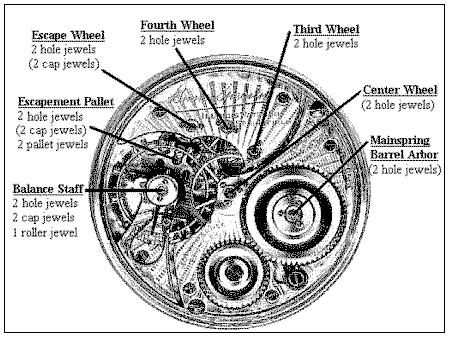 Earlier, speaking about watch movement stones, I didn't mention its forms, as size and view of each watch stone is a separate theme for talking. Especially you will find out the existing types of watch stones, it will be easier for you to understand the mission of the last. Jewels in movement of wristwatches classify according to its main function, i.e in different details of movement of different shaped jewels are set. Jewels of watch movement are divided into the following types: perforating, consignment, pallet and impulse. Some types of jewels are divided into several subspecies. I will describe each type of jewelery graphically. Earlier, speaking about watch movement stones, I didn't mention its forms, as size and view of each watch stone is a separate theme for talking. Especially you will find out the existing types of watch stones, it will be easier for you to understand the mission of the last. Jewels in movement of wristwatches classify according to its main function, i.e in different details of movement of different shaped jewels are set. Jewels of watch movement are divided into the following types: perforating, consignment, pallet and impulse. Some types of jewels are divided into several subspecies. I will describe each type of jewelery graphically.
Perforating watch jewels are main jewel, though, as I said above, the notion “main” towards any detail of watch sounds incorrect. But, judging by its number, in any “heart” of wristwatch perforating jeweleries claim to be main. Thus, in classic movement, having 17 jeweleries, only 10 are perforating “jewels”. These jewels load themselves with radical burden in support of axis,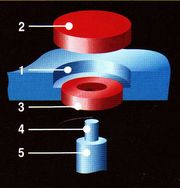 i.e serve as bearings of journal axis and tribes. Such journals have supported collar, therefore perforating jewels are characterized by cylindrical polished holes. The next deed of perforating jewels are jewels, having not cylindrical, but round holes, watchmakers call it olivaj. General feature of perforating jewels is presence of special deepening or oiler, in which is located watch oil. For these jewels don't cleave, masters which, as we understand, has unbelievably sharp vision for work with such smallest details, make in perforating jewels chamfer bullet-shaped in mounting. i.e serve as bearings of journal axis and tribes. Such journals have supported collar, therefore perforating jewels are characterized by cylindrical polished holes. The next deed of perforating jewels are jewels, having not cylindrical, but round holes, watchmakers call it olivaj. General feature of perforating jewels is presence of special deepening or oiler, in which is located watch oil. For these jewels don't cleave, masters which, as we understand, has unbelievably sharp vision for work with such smallest details, make in perforating jewels chamfer bullet-shaped in mounting.
Work of consignment jewels is in reducing friction on front surfaces of axis, in reliance. As a rule, jewels of this types are set in balance (with both sides) and in axis of speedy moving wheels, axis of anchor male, anchor tribe. Such special jewels have mainly mechanical wristwatches, because quartz models don't have saddle.
Pallets and jewels for anchor male are also made from synthetic ruby. These jewels are made in rectangular form of prism. Pallets are also divided into two subspecies by angle, made with impulse platitude and base surface. There are pallets of entering with more obtuse angle and pallets of exit, accordingly, with less obtuse angle. And one more moment – chamfer of entering pallet is in plane of the repose, and chamfer of exit pallet – against plane of repose.
Impulse jewel or, as masters call it ellipse, is a font of cylindrical shape with section in the view of shorn ellipse (hence the name). This type of movement jewel, made from ruby, responsible for interaction of balance with anchor male.
All the above types of jewels are used in every model of mechanical wristwatches. Traditional location of different watch jewels is the following: balance base is supported with 4 jewels, two of which are perforating, and the other two – consignment;.jpg) two pallets are for anchor male: on impulse roll of balance - one impulse jewel; and also two precious bearings are on axis of anchor wheel, anchor male, second and intermediate wheels, central tribe. After easy counting we can make a conclusion, that classical wristwatch movement has 17 main jewels. Number of jewels can be different, it is considered that more expensive wristwatches have more jewels. two pallets are for anchor male: on impulse roll of balance - one impulse jewel; and also two precious bearings are on axis of anchor wheel, anchor male, second and intermediate wheels, central tribe. After easy counting we can make a conclusion, that classical wristwatch movement has 17 main jewels. Number of jewels can be different, it is considered that more expensive wristwatches have more jewels.
It happens, that manufacture, guided by design considerations, removes part of jewels. It is considered, that on upper base of central wheel there is less pressure, than on the lower, that is why in the first one masters press saddle from brass, and in the second one - ruby. Classical women and men watch, as a rule, has central second hand, that is why, there is no need to add excess second axis, and accordingly additional jewel. In such three-handed watches the number of jewels is 15 pieces. That is why, if you meet wristwatch with 15-16 jewels, don't scold “lazy” and “greedy” manufacturer, saved excess jewel. In such models additional jewels say about wastefulness of watch company. It is easy to guess, that on number of jewels in movement influences different additional functions and watch complications – calendar, stopwatch, automatic winding, etc. Recently watchmakers don't skimp on “jewels” and often use in their models 21 jewels. Thus, two pairs of consignment jewels have appeared on ends of anchor wheel axis and third wheel.
There are also wristwatches, having huge number of jewels in its movement, that is about 50 pieces and more. You shouldn't suspect manufacturers in lie, it is possible that true is written on the case. However there is one “but” - all the above types of jewels are set directly in movement for improvement of its work, they are necessary and indispensable elements. Another variant – is jewels, that are should not be taken into consideration. Further we will understand what should be considered and what is not.
To count or not to count?
.jpg) To understand what watch jewels we should count, and what we shouldn't, we need to understand, what jewels hold functional load. For this purpose international organization in standardization ISO clearly identifies (though, about clearness of formulation we will talk later) two types of watch jewels – functional and non-functional. Therefore, to functional “jewels” of movement refer only jewels, which serve for stabilization of friction and reducing range of depreciation of surfaces, being in connection with each other. As you already guessed, this formulation calls up with main definition of watch jewel. To functional jewels refer, for example, jewels with holes, doing functions of radial or axis bases, jewels, contribute transition of move and power, and also several jewels, united in one functional node (for example, bearing coupling for winding). Thus, jewels, which don't match requirement of partition 3.2 (about functionality, according ISO), i.e not an axis base or serving base for watch details (for example, barrel and transfer wheels), call non-functional or decorative. Let's begin with them. To understand what watch jewels we should count, and what we shouldn't, we need to understand, what jewels hold functional load. For this purpose international organization in standardization ISO clearly identifies (though, about clearness of formulation we will talk later) two types of watch jewels – functional and non-functional. Therefore, to functional “jewels” of movement refer only jewels, which serve for stabilization of friction and reducing range of depreciation of surfaces, being in connection with each other. As you already guessed, this formulation calls up with main definition of watch jewel. To functional jewels refer, for example, jewels with holes, doing functions of radial or axis bases, jewels, contribute transition of move and power, and also several jewels, united in one functional node (for example, bearing coupling for winding). Thus, jewels, which don't match requirement of partition 3.2 (about functionality, according ISO), i.e not an axis base or serving base for watch details (for example, barrel and transfer wheels), call non-functional or decorative. Let's begin with them.
Non-functional jewels of movement are often used as decorations, you can close with it gaping holes in movement or decorate elements of watch “heart”. Especially perfect these jewels look, if movement is open for view of owner of wristwatch through transparent case back or skeletonized dial of watch. If functional and non-functional jewels in movement, on case the manufacturer indicates the general number of the first one. Or at least, must indicate. I say “must”, because in watch history there were cases of this rule default, about which I will talk lower. Number of decorative jewels since 1965 prohibited to mark on the case or movement of timepieces, to avoid unnecessary confusion.
Having considered different models of wristwatches, I concluded that notion “functionality” is rather elastic. Opinions, touching functionality of this or that jewel, divided. Thus, some watchmakers consider jewels to be fixed for more smooth stroke of calendar disc, don't refer to functional. But, if taking a thought, they do its special little function – reduce friction. In watch movement for making calendar in move there is needed efforts of 20 (25) grams on millimeter. Watch jewels, letting to reduce this effort twice, significantly reduce unwanted load on movement of wristwatches. Well, it should be said that its rather functional work, the more, if wristwatch, besides calendar, has Moon phase indicator, power reserve, etc. That is why it is rather different to judge about functionality of this or that jewel, noticed in the movement, is rather difficult.
“Useless” jewels or price of deception
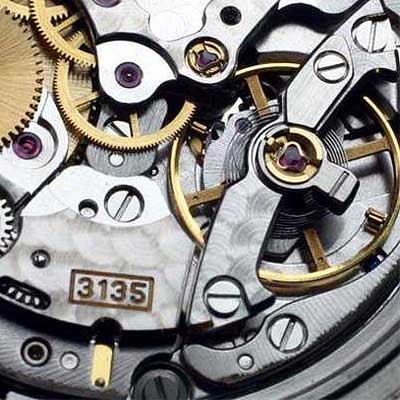 Certainly, position of ISO about Certainly, position of ISO about functional and non-functional watch jewels helped to count jewels, which has movement. But there are examples of such egregious lie and indecent pathos, that I can't help to mention it. In order to more clearly describe some of these “bad” examples, I took courage and conditionally distinguished the third group of movement jewels, which I called “useless jewels”. These are jewels, which could be technically functional due to ISO, but they are situated in the movement at such places, which don't have any load, and serve only for advertising purposes, to increase “in words” the number of movements “jewels”. Thus, if non-functional jewels have “modest” esthetic function, because its shine and play can watch through transparent watch details, and their “useless” brethren are often even not visible through opaque case. functional and non-functional watch jewels helped to count jewels, which has movement. But there are examples of such egregious lie and indecent pathos, that I can't help to mention it. In order to more clearly describe some of these “bad” examples, I took courage and conditionally distinguished the third group of movement jewels, which I called “useless jewels”. These are jewels, which could be technically functional due to ISO, but they are situated in the movement at such places, which don't have any load, and serve only for advertising purposes, to increase “in words” the number of movements “jewels”. Thus, if non-functional jewels have “modest” esthetic function, because its shine and play can watch through transparent watch details, and their “useless” brethren are often even not visible through opaque case.
Let's begin with more “modest” example. Thus, Swiss wristwatches from anonymous manufacturer, which in unknown reasons didn't specify his name, with proud report to watch lovers, that their movement has 41 jewels. In detail review it became clear that 16 jewels manufacturer set in the barrel wheel, may be for it not to rub about winding spring. I don't argue – friction is reduced, but to reach such result they could use more lavish method. It turns out that from 41 jewels only 25 are functional. This is rather fair number, why did they make such a rash act, and add extra jewels? May be some connoisseurs of luxury will not agree with me, but I don't think that such variant is something special and worth of praise. This is a shameless fraud.
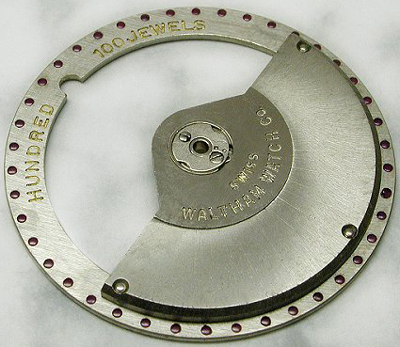 The next brightest The next brightest example of useless extra jewels is a men wristwatch from American company Waltham, movement of which is allegedly protected and preserved from soon depreciation by 100 jewels. For sure, manufacturers, developing this timepieces, wanted to enter the history, as great creators of first watch with record number of jewels, and hence with the most durable and accurate movement. But unfair company was exposed, and nowadays it is known all over the world as “watch lair”, and its wristwatch became the only one model in the world which has record number of non-functional and “useless” jewels. Here is the price of deception! And lie is in the following: inner ring of automatic winding rotor in Waltham wristwatches with both sides are equipped with small flat rubies, general number of which is 83 jewels. The manufacturer appeared to be such insolent, that didn't bother to close with additional jewel the done negligently 84-th hole. I don't think that group of Waltham save one more jewel, just watch company made this step in advertising purposes, aiming to reach round number of rubies. After all, advertising motto “Movement with 100 jewels!” really sounds proudly. Thus, from 100 jewels traditional 17 are functional ones, another 83 are on the rotor and they are “useless”. Actually this wristwatch had modest, but rather accurate and without pathos rubies, Swiss movement ETA 1700. May be, additional 83 example of useless extra jewels is a men wristwatch from American company Waltham, movement of which is allegedly protected and preserved from soon depreciation by 100 jewels. For sure, manufacturers, developing this timepieces, wanted to enter the history, as great creators of first watch with record number of jewels, and hence with the most durable and accurate movement. But unfair company was exposed, and nowadays it is known all over the world as “watch lair”, and its wristwatch became the only one model in the world which has record number of non-functional and “useless” jewels. Here is the price of deception! And lie is in the following: inner ring of automatic winding rotor in Waltham wristwatches with both sides are equipped with small flat rubies, general number of which is 83 jewels. The manufacturer appeared to be such insolent, that didn't bother to close with additional jewel the done negligently 84-th hole. I don't think that group of Waltham save one more jewel, just watch company made this step in advertising purposes, aiming to reach round number of rubies. After all, advertising motto “Movement with 100 jewels!” really sounds proudly. Thus, from 100 jewels traditional 17 are functional ones, another 83 are on the rotor and they are “useless”. Actually this wristwatch had modest, but rather accurate and without pathos rubies, Swiss movement ETA 1700. May be, additional 83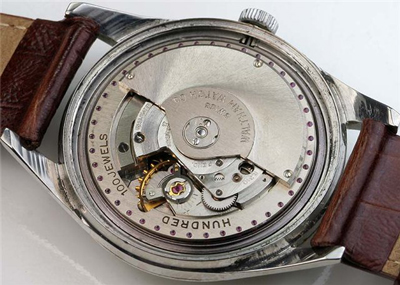 jewels provided more smoothly stroke of rotor, but the same effect can be reached with the help of less involved “jewels”. Well, we should give due, it is a good attempt, but to cheat the experienced watch specialists nobody can. It is clear, there are a lot of slothful manufacturers, aiming to get success by unfair methods and many companies walk costumer round tried. But after the case with Waltham all world watch companies became more prudent, and number of jewels of quality Swiss movement doesn't pass reasonable number. jewels provided more smoothly stroke of rotor, but the same effect can be reached with the help of less involved “jewels”. Well, we should give due, it is a good attempt, but to cheat the experienced watch specialists nobody can. It is clear, there are a lot of slothful manufacturers, aiming to get success by unfair methods and many companies walk costumer round tried. But after the case with Waltham all world watch companies became more prudent, and number of jewels of quality Swiss movement doesn't pass reasonable number.
Nevertheless, smart manufacturers search for different workaround to enlarge the number of jewels “functionally”, using non-effective methods. Thus, for example, Chinese calibers often have about 35 jewels. In it five additional rubies are hidden in two reverse wheels for its blocking and unblocking at the winding of wristwatches. There remain 25 necessary jewels. Another watchmakers trick is as following bearings, which are two in one caliber, have ball of rolling from synthetic jewel. Let's count: plus 12 jewels. There are also so called module wristwatches, which are very primitive – jewels are duplicated because of imperfection of the construction. In such models the number of jewels amaze – from 50 and more. But who can answer, where is the point? And there is simply no sense. And the last thing, which I want to say about? is “useless” jewels: reliability and accuracy of movement firstly depend on professionalism of watchmaker and quality of execution, and additional jewels just enlarge service interval. Some famous Swiss watch companies, trying to follow the fashion, enlarge the number of jewels in its models (but in reasonable limit). For example, if movement had 17 rubies, then next version of caliber can “enrich” on several jewels. Well, why not? Though and 17 - jewel movement feels well.
Where is the golden mean?
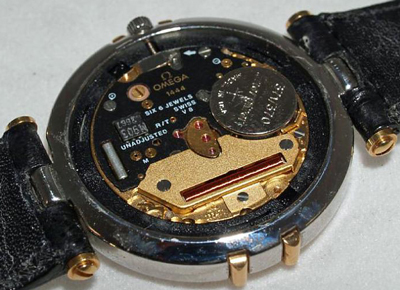 I said above that for accurate stroke of watch and smooth work of movement it is enough from 15 till 17 jewels, and in modern watches – 21-25 rubies. Number of jewels in watch movement mainly depends on number of its complications and additional functions with which equipped wristwatches. It is clear that the number of jewels changes in depending of number of different axis in movement. For example, your chronograph has additional dials with second hands, it would be nice to protect journal of its axis by jewels. It is nothing to talk about repeaters or jaquemarts in such cases number of rubies are growing rapidly. I said above that for accurate stroke of watch and smooth work of movement it is enough from 15 till 17 jewels, and in modern watches – 21-25 rubies. Number of jewels in watch movement mainly depends on number of its complications and additional functions with which equipped wristwatches. It is clear that the number of jewels changes in depending of number of different axis in movement. For example, your chronograph has additional dials with second hands, it would be nice to protect journal of its axis by jewels. It is nothing to talk about repeaters or jaquemarts in such cases number of rubies are growing rapidly.
If we take into consideration classical wristwatches with three central hands, as says watchmakers, the number of jewels itself minimally influences on the quality of movement work, i.e more than 17 jewels is a luxury. If your watch has automatic winding, the movement enriches on several jewels (21-25 rubies). More number of jewels have coaxial caliber, due to constructive specialties of this descent. Golden mean is meaning inappropriate for jewels , it changes depending on watch model. If number of rubies transships reasonable limits, you should be on the alert, as there are many manufacturers , who making regular exclusive watch model, guide by the principle “you can't spoil porridge with butter”. It seems, there is nothing to be frighten of, but this “riches porridge” is only for your money. Everything is logic: more jewels – more expensive wristwatches. But I, for example, don't want to pay a lot of money for that, what can costs much cheaper. But let's leave material questions, we talk about great time and instruments for its measure.
In watch industry there is another “excesses” - they are women and men wristwatches without jewels of movement. These wristwatches, about which in circles of connoisseurs of watch mechanics is said not too much is quartz movement. Actually, quartz.jpg) movements don't need jewels, because wheel transmission gets load only at that moment, when stepping motor makes a turn. In this case tension in axis is absent, that is why the only one thing , what requires for coefficient friction and prevention depreciation of movement elements is to make surfaces as light as possible. Thereby wheels and plates of quartz movements are made from almost “weightless” plastic. It is easy to guess that coefficient of friction steel on plastic or plastic on plastic is not high. Therefore, in quartz movement there can be the only one jewel which is functional, it is situated in rotor base of stepping motor, as it is the only one axis experiencing at least some tension. But there are cases, when expensive quartz movement (mainly from Swiss manufacturers) are protected by rather a lot of rubies. For example, Swiss watch company Omega in its quartz wristwatches Seamaster Professional set as much as 6 jewels, and another Swiss company Tissot uses in its quartz models even more jewels, but no one can be called non-functional. For example, Swiss wristwatch Tissot T-Sport has durable quartz movement with 15 functional rubies, providing to watch smooth stroke and high accuracy. But you shouldn't follow “richness” of quartz. If on our quartz watches it is written “1 jewel”, “2 jewels” or even “No jewels”, it doesn't say about low quality of watch. In this case – happiness is not in jewels. movements don't need jewels, because wheel transmission gets load only at that moment, when stepping motor makes a turn. In this case tension in axis is absent, that is why the only one thing , what requires for coefficient friction and prevention depreciation of movement elements is to make surfaces as light as possible. Thereby wheels and plates of quartz movements are made from almost “weightless” plastic. It is easy to guess that coefficient of friction steel on plastic or plastic on plastic is not high. Therefore, in quartz movement there can be the only one jewel which is functional, it is situated in rotor base of stepping motor, as it is the only one axis experiencing at least some tension. But there are cases, when expensive quartz movement (mainly from Swiss manufacturers) are protected by rather a lot of rubies. For example, Swiss watch company Omega in its quartz wristwatches Seamaster Professional set as much as 6 jewels, and another Swiss company Tissot uses in its quartz models even more jewels, but no one can be called non-functional. For example, Swiss wristwatch Tissot T-Sport has durable quartz movement with 15 functional rubies, providing to watch smooth stroke and high accuracy. But you shouldn't follow “richness” of quartz. If on our quartz watches it is written “1 jewel”, “2 jewels” or even “No jewels”, it doesn't say about low quality of watch. In this case – happiness is not in jewels.
It's time to count jewels
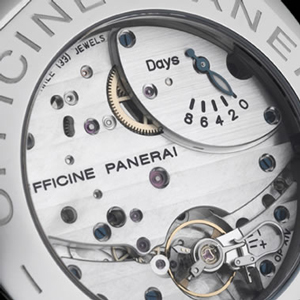 Now, when our respectable Now, when our respectable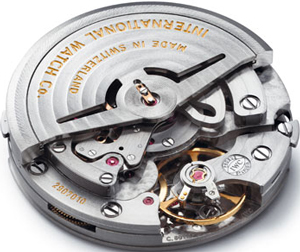 reader is “armed to teeth” with all needed information, connected with jewels of watch movement , it's time to look at concrete examples from modern world of wristwatches. As we can see, now in 50 years after “jewels boom”, when fashion of fullness of movement jewels stayed in the past, and examples of fraud from the side of unfair manufacturer of watches served a perfect lesson for modern watch companies, watchmakers equip its men and women wristwatches with rather smart number of jewels, making the main thrust on its necessity, i.e on functionality. I suggest to pay attention on Swiss and Italian wristwatches, which manufacturer replenish with rather fair number of functional jewels (i.e more than 25 rubies). Let's remember simple arithmetic and count jewels, the main characteristic of which is the word “functional”. Let us go forward in increasing the number of jewels. Let's begin with “modest” example, if, of course, 28 jewels can be considered as modest decoration. This number of rubies has automatic caliber Cal. 80110, developed by IWC company and set in Swiss men wristwatch IWC Ingenieur Automatic (reference IW323603). This men watch doesn't have complications, it has hour and second indicators with the help of three central hands, and also date aperture at the position “3 o'clock”. Power reserve of this model is 44 hours, and water resistance – 120 meters. Besides, this wristwatch has anti-shock system and durable system of automatic winding Pellaton, for which additional rubies were needed. Swiss watch IWC Ingenieur Automatic has rather attractive design – round dial and rubber strap are made in deep blue color, and produced series are limited with 1000 pieces. reader is “armed to teeth” with all needed information, connected with jewels of watch movement , it's time to look at concrete examples from modern world of wristwatches. As we can see, now in 50 years after “jewels boom”, when fashion of fullness of movement jewels stayed in the past, and examples of fraud from the side of unfair manufacturer of watches served a perfect lesson for modern watch companies, watchmakers equip its men and women wristwatches with rather smart number of jewels, making the main thrust on its necessity, i.e on functionality. I suggest to pay attention on Swiss and Italian wristwatches, which manufacturer replenish with rather fair number of functional jewels (i.e more than 25 rubies). Let's remember simple arithmetic and count jewels, the main characteristic of which is the word “functional”. Let us go forward in increasing the number of jewels. Let's begin with “modest” example, if, of course, 28 jewels can be considered as modest decoration. This number of rubies has automatic caliber Cal. 80110, developed by IWC company and set in Swiss men wristwatch IWC Ingenieur Automatic (reference IW323603). This men watch doesn't have complications, it has hour and second indicators with the help of three central hands, and also date aperture at the position “3 o'clock”. Power reserve of this model is 44 hours, and water resistance – 120 meters. Besides, this wristwatch has anti-shock system and durable system of automatic winding Pellaton, for which additional rubies were needed. Swiss watch IWC Ingenieur Automatic has rather attractive design – round dial and rubber strap are made in deep blue color, and produced series are limited with 1000 pieces.
.jpg) Next in turn is movement Next in turn is movement with 32 jewels Cal.896, with which equipped Swiss wristwatch from world known company Jaeger-Le-Coultre. This movement consists of 242 elements and works with frequency 28 800 vph, power reserve is 43 hours. with 32 jewels Cal.896, with which equipped Swiss wristwatch from world known company Jaeger-Le-Coultre. This movement consists of 242 elements and works with frequency 28 800 vph, power reserve is 43 hours.
For one jewel more has Italian wristwatch in military style from a company, “commanding the time”. Fans of Panerai immediately recognized this famous motto. Italian men wristwatch Panerai PAM190 Radiomir 8-days, 45 mm case of which is made from high quality stainless steel, has movement with hand winding, equipped with 33 jewels. Two central hands on the dial count hours and minutes, and additional small second hand at the position of “9 hours” needs additional jewels. Power reserve of this wristwatch is unique – 8 days, and water resistance is rather small for military watch – 100 meters.
Another unique automatic movement Cal. 1315 is in Swiss wristwatch Blancpain 500 Fanthoms Diving Watch, designed for fans of scuba diving. This caliber, consisting from 222 elements, accommodate in itself 35 functional rubies. Power reserve of Swiss watch is 120 hours. Uniqueness and complicity of caliber 1315 from Blancpain is in that it has three barrels and balance Glucydur, that's why all 35 jewels make its important tasks.
Special attention deserves unique coaxial caliber OMEGA 8500 with automatic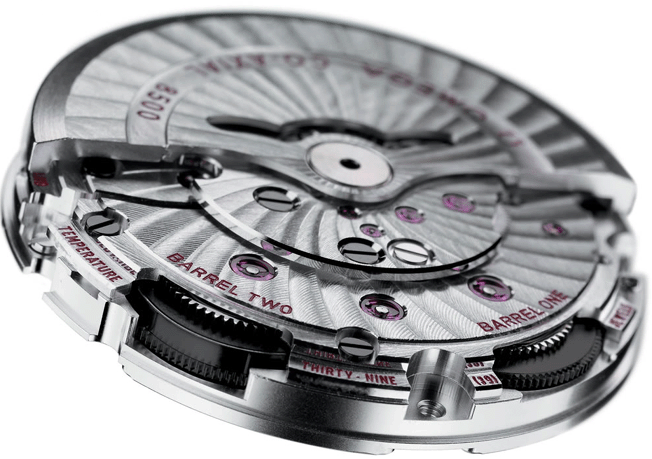 winding, developed by workers of Swiss company Omega in 2007. Characteristic specialty of this movement is that it was projected from the ground up, and not on a base of earlier created calibers, what is a rarity in modern watch industry. Caliber 8500 is equipped with 39 jewels, the par of which are needed for reducing the friction of coaxial descent Hour Vision, and also for smoother work of two consistently located barrels, provided high stabilization of stroke. So, 39 jewels – and each is in its place! Bravo! winding, developed by workers of Swiss company Omega in 2007. Characteristic specialty of this movement is that it was projected from the ground up, and not on a base of earlier created calibers, what is a rarity in modern watch industry. Caliber 8500 is equipped with 39 jewels, the par of which are needed for reducing the friction of coaxial descent Hour Vision, and also for smoother work of two consistently located barrels, provided high stabilization of stroke. So, 39 jewels – and each is in its place! Bravo!
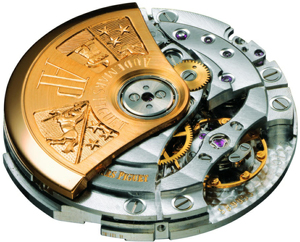 At last, we smoothly undergo the nominal board, limited with 40 jewels, and opens this peculiar Swiss caliber Cal. 3120 with 40 jewels from great company Audemars Piguet. Swiss wristwatch Audemars Jules Piguet 3120 Classic has this automatic movement, working with frequency 21 600 vph and provides power reserve of 60 hours. Functions of watch is the most needed – hours, minutes, seconds (central hands) and date (at the position of “3 o'clock”). At last, we smoothly undergo the nominal board, limited with 40 jewels, and opens this peculiar Swiss caliber Cal. 3120 with 40 jewels from great company Audemars Piguet. Swiss wristwatch Audemars Jules Piguet 3120 Classic has this automatic movement, working with frequency 21 600 vph and provides power reserve of 60 hours. Functions of watch is the most needed – hours, minutes, seconds (central hands) and date (at the position of “3 o'clock”).
I ask you to pay special attention on one more Italian watch brand with beautiful name Anonimo. This is rather young company, born in Florence, gained leading positions on world watch market thanks to its activities and success in sphere of watch innovations. Nowadays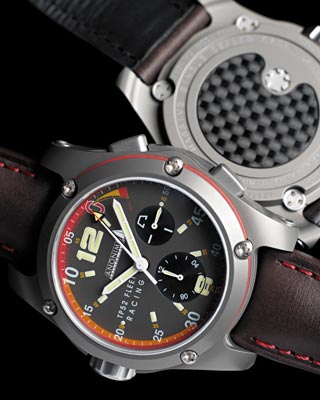 we are interested in Italian wristwatch Anonimo TP-52 Fleet Racing (ref. 7000), and exactly in its unique movement. So, movement from Anonimo caliber Dobois-Depraz with automatic winding has additional module of chronograph and is equipped with 49 jewels, power reserve is 40 hours. Automatic movement is assembled on a base of Swiss caliber ETA 2892A2 and works with frequency 28 800 vph. To understand some reasons of usage of such great deal of jewels, let's have a look on watch. They are hours, minutes, additional dials at the positions of “3 o'clock”, and “6 o'clock”. Additional dials, hands, and additional axis are one of the reason of appearing excess rubies. I've noticed, that such number of functional jewels in wristwatch movement is one of record in the world. Therefore with it Italian watch company Anonimo is on the third place in our peculiar “tournament board”. Let's go further, and see who get silver and gold. we are interested in Italian wristwatch Anonimo TP-52 Fleet Racing (ref. 7000), and exactly in its unique movement. So, movement from Anonimo caliber Dobois-Depraz with automatic winding has additional module of chronograph and is equipped with 49 jewels, power reserve is 40 hours. Automatic movement is assembled on a base of Swiss caliber ETA 2892A2 and works with frequency 28 800 vph. To understand some reasons of usage of such great deal of jewels, let's have a look on watch. They are hours, minutes, additional dials at the positions of “3 o'clock”, and “6 o'clock”. Additional dials, hands, and additional axis are one of the reason of appearing excess rubies. I've noticed, that such number of functional jewels in wristwatch movement is one of record in the world. Therefore with it Italian watch company Anonimo is on the third place in our peculiar “tournament board”. Let's go further, and see who get silver and gold.
 On the honorable second place, I guided by experts' opinions in watch sphere and (I must confess) by my own preferences, put inimitable Swiss company Ulysse Nardin , which is famous all over the world with its unique development in sphere of watchmaking and complicated watch movements. If I will say, that on the accounts of company Ulysse Nardin there is unique caliber 160, having 52 jewels and complicated double date, I don't amaze our respectable reader. I will give another example. The thing is that famous Swiss company Ulysse Nardin made more unique from technical point of view movement – it is automatic caliber Cal. 67, set in case of wristwatch Ulysse Nardin Sonata, for work of which “keeps close watch” 109 jewels. I will notice that all 109 jewels are highly functional, and not “useless”, as allegedly 100 jewels Waltham. Unique Swiss men wristwatch Ulysse Nardin Sonata works with frequency of 28 800 vph, it is equipped with alarm function, power reserve indicator and system of double time with opportunity of immediate “transition” from one time zone to another. For description of this wristwatch model I can't help but On the honorable second place, I guided by experts' opinions in watch sphere and (I must confess) by my own preferences, put inimitable Swiss company Ulysse Nardin , which is famous all over the world with its unique development in sphere of watchmaking and complicated watch movements. If I will say, that on the accounts of company Ulysse Nardin there is unique caliber 160, having 52 jewels and complicated double date, I don't amaze our respectable reader. I will give another example. The thing is that famous Swiss company Ulysse Nardin made more unique from technical point of view movement – it is automatic caliber Cal. 67, set in case of wristwatch Ulysse Nardin Sonata, for work of which “keeps close watch” 109 jewels. I will notice that all 109 jewels are highly functional, and not “useless”, as allegedly 100 jewels Waltham. Unique Swiss men wristwatch Ulysse Nardin Sonata works with frequency of 28 800 vph, it is equipped with alarm function, power reserve indicator and system of double time with opportunity of immediate “transition” from one time zone to another. For description of this wristwatch model I can't help but.jpg) use adjective only in superlative degree. Well, worthy silver medalist! use adjective only in superlative degree. Well, worthy silver medalist!
And at last, the winner of my small “competition” became perfect Swiss watch company Patek Philippe, the name of which widely known all over the world, with its genius invention – Caliber 89. The number of jewels of movement is record – 126 pieces! This rarest movement, on creation of which experienced watchmakers gave 9 years, gives life to astronomic watch Patek Philippe Caliber 89, which became famous as watch with huge number of complications. In general – 33 complications! Calibre 89 has 1728 elements, 184 bearings, 61 bridge, 332 screws, 415 axis, 68 springs, 429 mechanical parts and...126 jewels. Accordingly, the weight of such watch are decent – about a kilo. May be this model shouldn't be put in our record table, as Caliber 89 is a pocket watch. In this case golden medal are owned by Ulysse Nardin. But can we ignore such huge and complicated work, made by genius watchmakers from Patek Philippe to 150 anniversary of Swiss company. Applause to the winner!
Wristwatch models above is just a small part of movement examples with functional jewels, number of which really influence very well on watch stroke and continuation watch serve.
Wristwatch is a jewel
Every person, choosing wristwatch, base on own interests and preferences – someone likes simplicity and laconic, another one – chic and shine of jewels placer and perfection of honorable metals both outside and inside of watches. In my opinion, any wristwatch values not by jewels number, but by the grade of its “worthiness”, i.e technical range of movement making, originality and uniqueness of design. Every worthiness watch is a jewel. Wristwatch can “wear” worse or simplest “cloths”, but inside has a treasure. And vice versa. I don't say that jewels number don't influence on its work, today we saw, and the main aim of watchmakers all over the world is aspiration to perfection. Time, which is transient and which always not enough for people of our huge planet is one of the person's wealth, and wristwatch is a device, with the help of which we count our treasure, wristwatch is kind of “guide” through years and epochs. Let's begin to value our main jewel, the price of which can't be count by earthly money.
|


